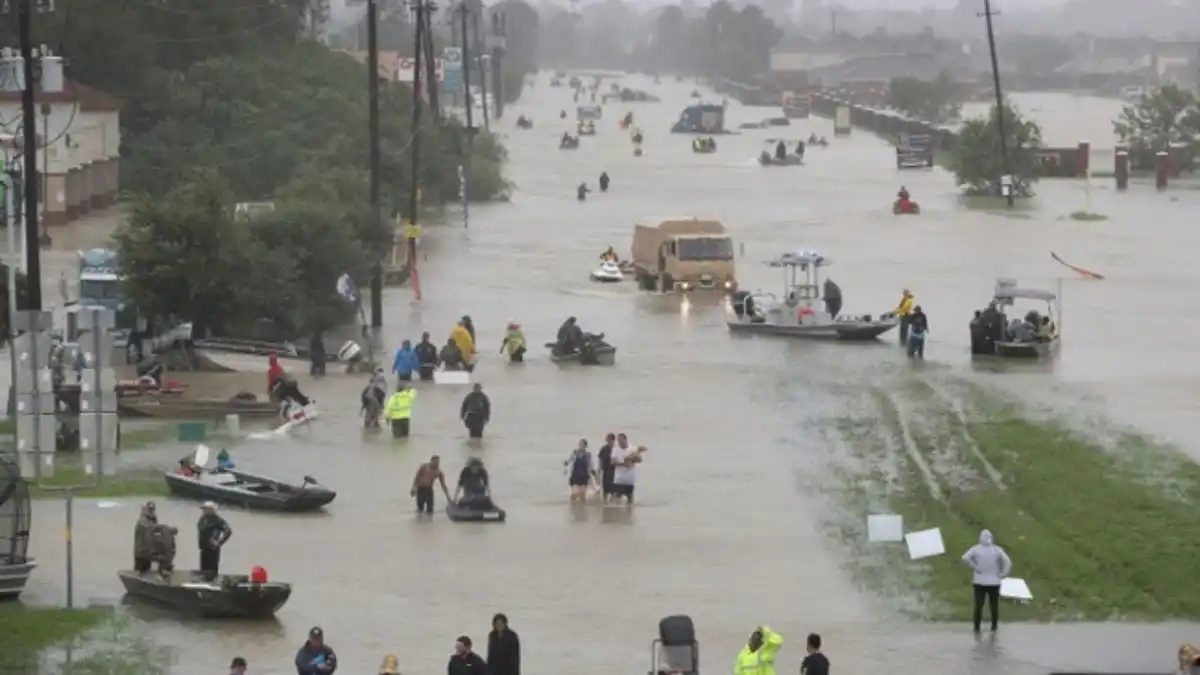Sikkim Floods 2023: The serene landscapes of Sikkim were recently marred by a devastating natural calamity. In a sudden turn of events, Sikkim Floods 2023 wreaked havoc in various districts, leaving a trail of destruction. In this blog post, we will delve into the details of the disaster, highlighting the rescue efforts and the impact on the region’s communities.
Understanding the Calamity:
“A cloudburst above Lhonak Lake in North Sikkim triggered a flash flood in the Teesta River, submerging towns and villages in its wake. 🏞️ The calamity was exacerbated by the release of water from the Chungthang dam, intensifying the Sikkim Floods 2023 and posing a severe threat to the residents.”
Rescue Operations and Evacuation Efforts:
“Swift action was taken by the Border Road Organisation (BRO) and defense officials to launch extensive rescue operations. 👮♂️ 80 locals were safely evacuated from the affected areas. The Sikkim government played a vital role, ensuring the relocation of Singtam town residents to safe shelters. 🏠 Dikchu village inhabitants were evacuated to a nearby school, prioritizing their safety amidst the crisis.”
The Human Toll:
“Tragically, lives were lost in the Sikkim Floods 2023, with several individuals reported missing. Families anxiously await news of their loved ones, highlighting the human toll of this catastrophe. Our hearts go out to those affected. 💔”
Impact on Infrastructure:
“The Sikkim Floods 2023 washed away critical infrastructure, including the Indreni steel bridge in Gangtok’s Singtam. This has severely disrupted local connectivity, creating challenges for both residents and rescuers alike. 🌉”
Government Response and Future Preparedness:
“Sikkim Floods 2023: Sikkim’s Chief Minister, PS Tamang, promptly assessed the situation, urging officials to remain vigilant. The government’s rapid response and evacuation strategies saved numerous lives. 🙌 However, this disaster underscores the need for enhanced disaster preparedness measures.”
Conclusion:
“As Sikkim grapples with the aftermath of the Sikkim Floods 2023 calamity, the resilience and unity of its people shine through. While nature has dealt a harsh blow, the spirit of community and the dedication of rescue teams offer hope amidst despair. Let’s stand together in solidarity with Sikkim, extending our support to rebuild lives and communities in the face of adversity. 🌟”
Table:
| District | Evacuated Residents | Missing Persons |
|---|---|---|
| Singtam | 80 | Not confirmed |
| Dikchu | To nearby school | Not confirmed |
Remember, disasters like these remind us of the importance of community, preparedness, and compassion. Let’s join hands in aiding the recovery efforts and supporting the resilient people of Sikkim during this challenging time. 🤝
Q1: What caused the flash floods in Sikkim?
A1: The flash floods in Sikkim were triggered by a cloudburst above Lhonak Lake in North Sikkim. The release of water from the Chungthang dam further intensified the flooding.
Q2: How did the government respond to the disaster?
A2: The government swiftly launched rescue operations, led by organizations like the Border Road Organisation (BRO) and defense officials. Evacuation efforts were prioritized, ensuring the safety of affected residents.
Q3: What areas were most affected by the floods?
A3: Singtam, Mangan, Gangtok, Pakyong, and Dikchu were among the areas severely affected by the flash floods. Indreni steel bridge in Singtam was washed away, disrupting local connectivity.
Q4: How many people have been evacuated so far?
A4: Approximately 80 locals were safely evacuated from Singtam. Additionally, residents of Dikchu village were relocated to a nearby school for their safety.
Q5: Are there any missing persons?
A5: Yes, there are reports of missing persons. However, the exact number is yet to be confirmed as authorities are still gathering details.
Q6: What is the current situation of the Teesta River water level?
A6: As of the latest update, the Teesta River water level fell below the danger mark, providing some relief. The Central Water Commission continues to monitor the situation closely.
Q7: How can I contribute to the relief efforts in Sikkim?
A7: Several relief organizations and government bodies are actively involved in the recovery process. Donations to these organizations can greatly assist in providing aid to the affected communities. Check their official websites for more information on how to donate.
Q8: What precautions should residents in nearby areas take during this time?
A8: Residents in nearby areas are advised to remain vigilant. Stay tuned to local news and government announcements. Avoid areas prone to flooding and follow evacuation orders promptly. Have emergency kits ready and assist neighbors, especially the elderly and those with disabilities, in case of evacuation.
Q9: How can I stay updated on the situation in Sikkim?
A9: Stay informed through official government sources, local news channels, and social media accounts of relevant authorities. Regular updates from official channels provide accurate and timely information about the ongoing situation and relief efforts.
Q10: What measures are being taken to prevent such disasters in the future?
A10: Authorities are likely to conduct thorough assessments of the current disaster. Recommendations for infrastructure improvements, early warning systems, and disaster preparedness will be crucial. Communities and government bodies must collaborate to create robust strategies to mitigate the impact of similar events in the future.
Read more:
Unraveling the Dynamics of Gold and Silver Prices: A Deep Dive into Market Trends and Influences
Deep crisis incident in government hospitals of Nanded: अस्तित्व के सवाल पर सोचने की बारीकी
Guwahati’s Traffic Woes: The Street Vendor Dilemma
